How to Upload a Jpg to Photoshop

Inserting an epitome in Photoshop using the drag-and-driblet method does not sound similar much of a challenge. Merely this seemingly simple tasks involves quite a lot of action in Photoshop. In this tutorial, you lot will learn about the import options in Photoshop and how to integrate them with your workflow.
There are diverse ways to insert an image in Photoshop. Whether you simply drag and driblet the image in Photoshop or transfer it from an image database such as Lightroom, your photos will always be imported in the best possible quality. But because this alone does not guarantee razor-sharp photos, there are some ways to bank check the image data already during the import.
Contents:
- Inserting images via drag and driblet
- Integrating photos in existing documents
- Importing images from Lightroom
Inserting images in Photoshop via drag and drop
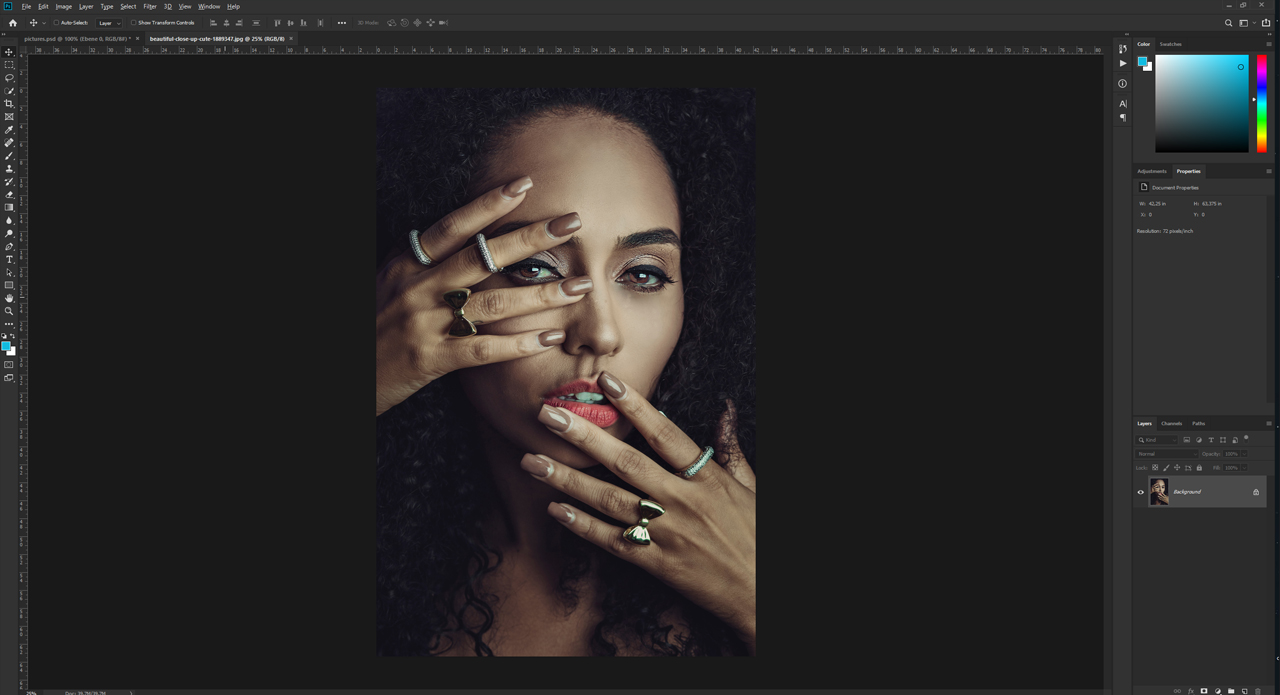
As already mentioned, the import using the drag-and-drop method is often the easiest way to import photos in Photoshop. Open Photoshop and drag a photo from the Explorer or from your desktop onto the Photoshop user interface. In one case you release the left mouse button, the epitome is opened as a new document. The document containing the image has exactly the same dimensions and settings of the original paradigm including the resolution, the width, length and colour mode.
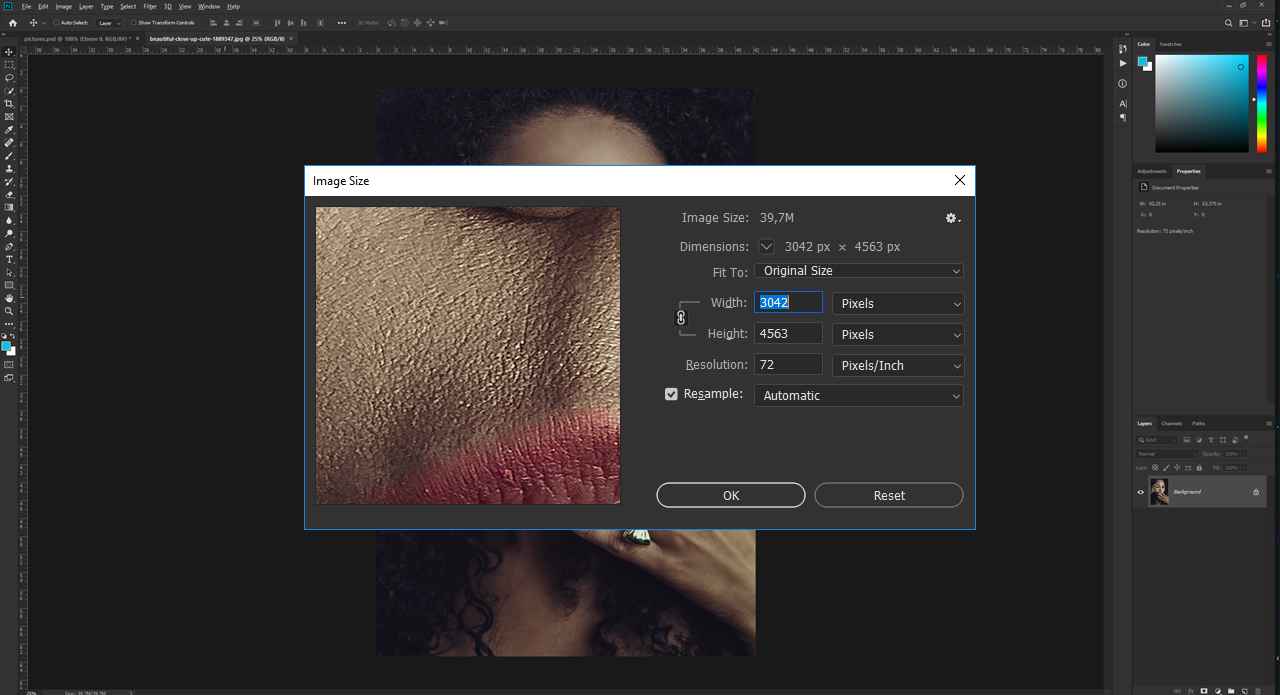
To cheque the image information, click Image > Paradigm Size in the top card. This dialog box gives an overview of the general epitome quality. The photo in the example has an overall resolution of 3042 x 4563 px and 107 x 160 cm. These values are ideal to edit the photograph for press, for example.
Inserting photos in existing documents
Every bit in the first instance, you tin import an image into an existing document using the drag-and-driblet function. If the image is non displayed over the full width and superlative of the document after the import (see pic), this might point that the newly imported epitome is as well modest to be scaled to the size of the certificate. This is because the photo will exist inserted in maximum quality also when it is imported in an existing certificate.
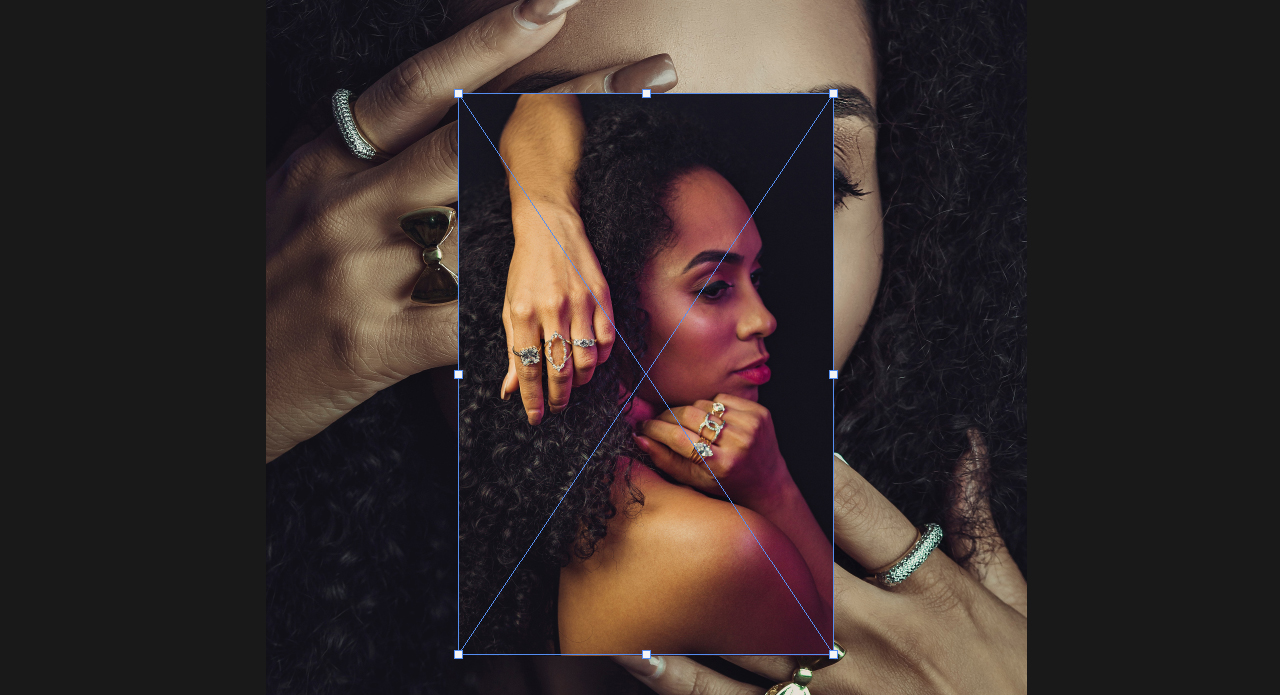
Just it might still exist possible to scale the inserted photos. In order to discover this out, y'all need to access the epitome data of the newly imported image. If you lot click Epitome > Prototype Size once again, yous will run across the dimensions and the resolution of the document and not of the new photo.
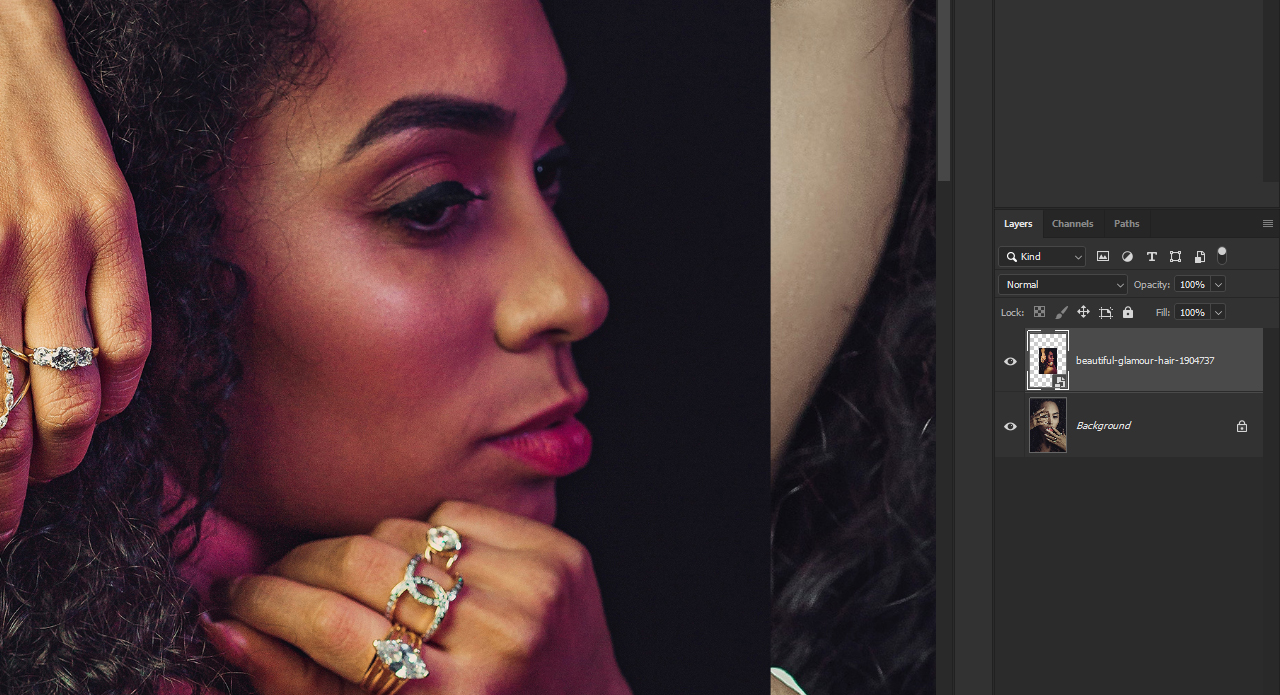
This is where Photoshop's Smart Objects come into play. One time a photo is imported into an existing certificate, Photoshop converts it to a smart object. This is indicated by the small file icon in the right-hand corner of the layers thumbnail. Double-click the thumbnail to open up the newly imported photo as a separate but linked certificate. Now you can verify the image information again via Epitome > Image Size.
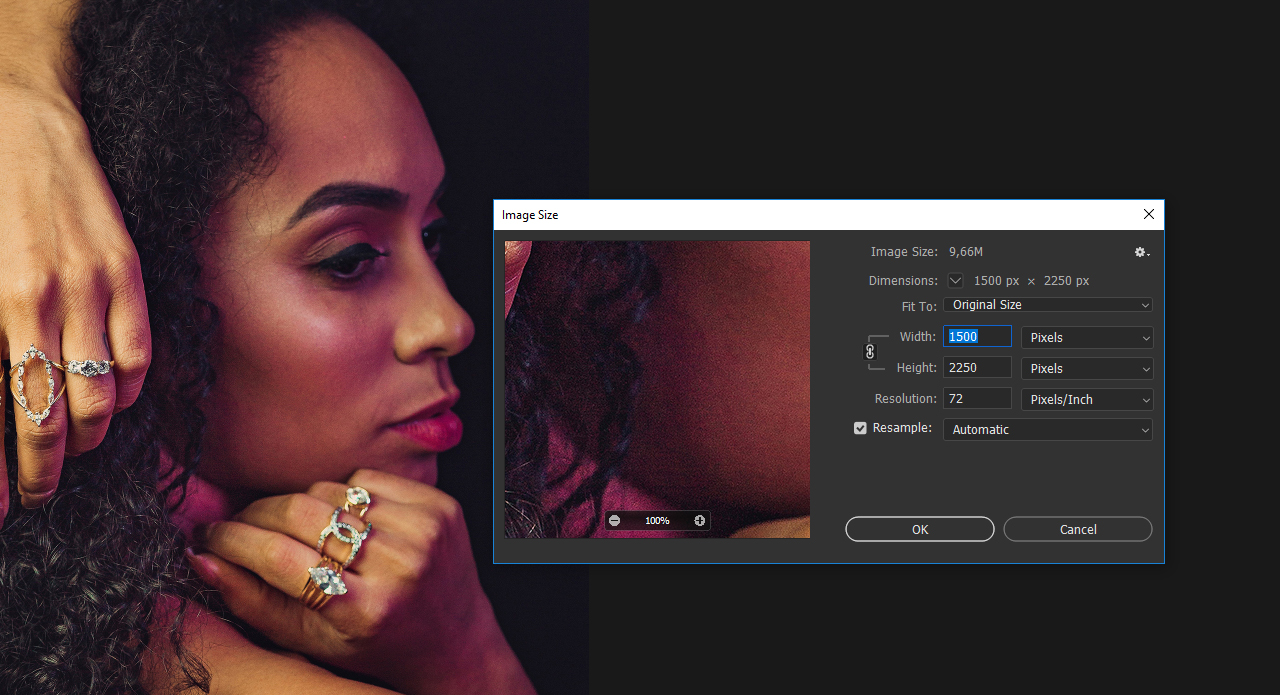
Tip: You can apply whatsoever changes, such as colouring or retouching, to the smart object in the opened document. Afterward editing, save the smart object using Ctrl + S to close the certificate and employ the changes to the original certificate as well. For more than information, read our tutorial on smart objects.
Importing images from Lightroom

Some other way to insert photos in Photoshop is to use Lightroom to view and organize your photos and import them from there. This way, you don't have to relieve your photos on your estimator only use the Adobe Cloud Storage to keep your photos organised.
Before importing from Lightroom, open Photoshop and click the plus icon in the upper left corner. Then cull the image to exist imported in your Explorer and click Review For Import. To upload the photo to the Adobe Deject, click Add Photos in the upper right corner. You will then see a small cloud icon with a spinning bluish progress wheel in the upper right corner. Once this icon has disappeared afterward a few seconds, your photo has been uploaded to the cloud and is set up to be imported in Photoshop.

To do so, open up Photoshop and click the Lr Photos tab of the Start workspace. A listing of photos that have already been added is displayed. Click the Refresh button to load the latest version of your image database including your recently uploaded photo. Now click on this photo and choose Import Selected. Later on, the photo is downloaded to your local machine and can be edited as usual.
caldwellassitiony.blogspot.com
Source: https://www.onlineprinters.co.uk/magazine/insert-images-photoshop/
0 Response to "How to Upload a Jpg to Photoshop"
Post a Comment